This was published 7 years ago
Sir Bani Yas island, United Arab Emirates: Exotic Arab escape
By Steve Meacham
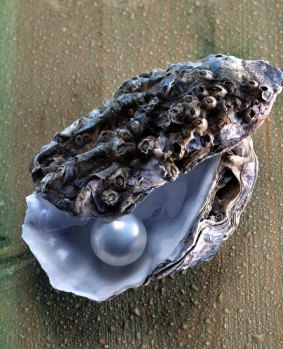
Close up on a pearl in an oyster shell.
Bottlenose dolphins playfully circle the classically built Arab dhow as I place that unfashionable wooden nose peg over my nostrils and prepare to drop below the warm Gulf waters in search of nature's most romantic irritant.
Natural pearl. Is any jewel its equal? Any that has inspired such great art and literature, decorated countless kings and queens, and provided a salve to so many marital disputes?
But, before you answer, of course I'm wearing the thin, long-sleeved, hooded cotton shift worn traditionally by Arab pearl divers to protect themselves from jellyfish. And, yes, that string net around my neck is where I'll place any gem-bearing oysters I collect from the ocean floor below.
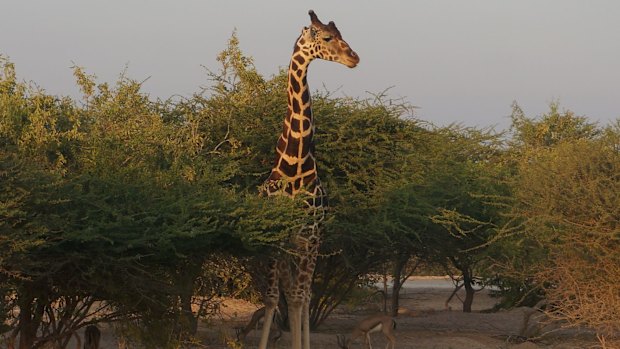
Sir Bani Yas Island.Credit: Steve Meacham
As I float nervously, Mustafa – holding the drop rope over the side of the dhow – instructs me to place one foot in the loop immediately above the heavy stone that will soon plunge rapidly downwards ... dragging me with it.
I take a lungful of air and signal to Mustafa I'm ready.
Instantly I'm descending at disconcerting speed, the pressure building in my ears ...
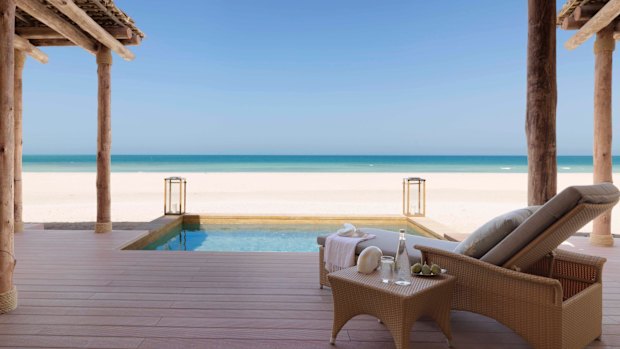
Sir Bani Yas Island.
Oh, am I already at the bottom? (Yes, it's only three metres deep). So now it's just a question of how long I can hold my breath while collecting as many oysters as possible.
Arab men (never women) have been diving for pearls along this Gulf coast for at least 1000 years, often venturing as deep as 10 metres.
They begin as nine-year-old boys, learning to pry open the oysters with a lethally sharp knife to search for the elusive jewels. At 12, they are old enough to dive, working from sunrise to sunset. The best hold their breath for five minutes before they give three tugs on the safety rope, alerting the rope man in the dhow to haul them speedily back up.
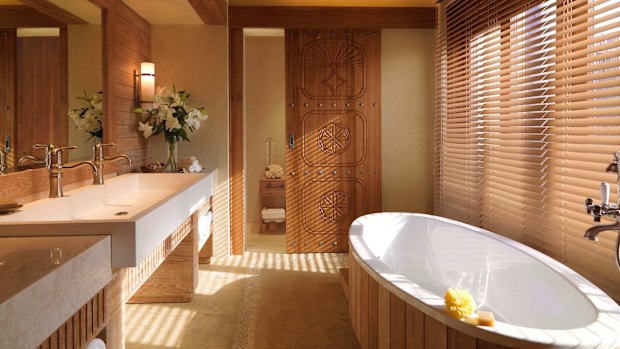
Sir Bani Yas Island.
Sadly, I barely last a minute underwater before I signal Yunous, our dhow captain, that I'm ready to surface. And I know I'm not going to be suddenly rich because I've collected only one oyster, and the odds of finding a pearl are well over 2000 to one.
Not that guests who try the three-hour pearl diving experience at Sir Bani Yas Island – a three hour drive and 25-minute ferry ride from the city of Abu Dhabi – leave the dhow empty handed.
Each resort diver finds a cultured pearl in one of the oysters they bring to the surface. (They have been planted before the dive by Yunous and his crew). Which is ironic because it was the cultured pearl that killed off pearl diving, and we have an Australian to thank for that.
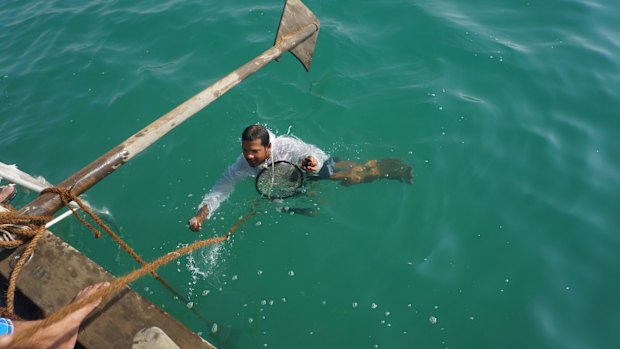
A pearl diver resurfaces with oysters - which may contain pearls.Credit: Steve Meacham
British-born marine biologist William Saville-Kent is credited with being the first to produce both blister and spherical pearls of commercial quality, That was in 1906 while he was experimenting on Thursday Island. But once he shared his techniques with the Japanese, pearl divers around the world were soon out of work.
Still, it's fitting that the first western mention of Sir Bani Yas – the biggest island in the Emirate of Abu Dhabi, itself the largest and wealthiest of the seven Emirates which make up the United Arab Emirates – came about because of its pearl divers.
In the 1590s, a Venetian jeweller named Gasparo Balbi listed "Sirbaniast" as a source of the world-class pearls.
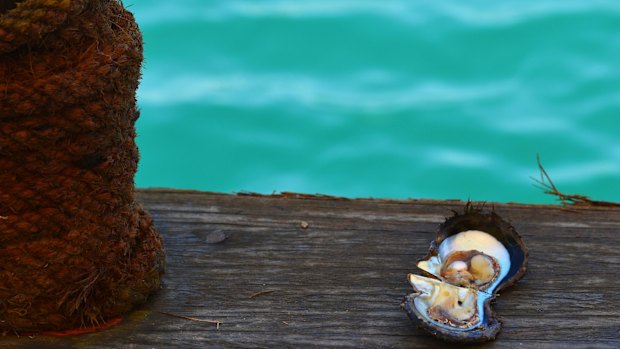
A three-hour pearl diving experience can be part of a visit to Sir Bani Yas Island.
Today Sir Bani Yas is one of the great natural wonders of the United Arab Emirates – not only a former royal retreat that is now a five-star luxury resort (managed by the exquisitely detailed, Thai-based, spa-focused Anantara group) but also Arabia's first safari-style wildlife reserve.
The Arabian Wildlife Park owes its existence to the late Sheikh Zayed Bin Sultan Al Nahyan, the founder of the UAE in 1971.
One of the world's richest men (worth a reputed $US20 billion), he was president of the UAE for 33 years. And Sir Bani Yas was his personal retreat.
The island had been in his family for generations: Bani Yas is the name of the Bedouin tribe who went from being part-time pearl divers to full-time rulers by the time oil was discovered in 1958.
Obviously, Sheikh Zayed built an island palace for himself. But, even more impressively, he built a massive, hotel-sized lodge for the guests he invited to visit.
Today that guest lodge is the centre point of Anantara Sir Bani Yas Island Resorts, spread over three contrasting but luxurious properties. The refurbished lodge, with the addition of Anantara's signature spa, is now the Arabic-themed Desert Islands Resort. But guests can also stay at two, more intimate, mini-resorts.
Al Sahel, within the wildlife park, has an African safari atmosphere with antelope and other herbivores grazing on the lawns and drinking from the pools. At Al Yamm (where I stayed) the luxurious beachfront villas are based on "the homes of the early fishermen who lived on the island".
Each mini-resort is self-contained, with its own restaurant, bar, gym and swimming pool, though guests are encouraged to visit the others for a change of scenery and diet. (Try the under-the-stars barbie on the beach at Desert Islands, with traditional Arab mezze, grilled meats and fish, deserts, coffee and hookah pipes served to sofas dotted around the sand.)
All this luxury is a far cry from the life of the Nestorian monks who built their sparse monastery on Sir Bani Yas around the time Muhammad was born.
Undiscovered until 1992, it is the only known pre-Islamic Christian site in the UAE – and a key site on the guided history tours departing Desert Sands each day.
Sheik Zayed was passionately interested in conservation, particularly of endangered Arabian animals. So in 1977 he banned hunting on the island and began planting 2.8 million acacia and mangrove trees to provide the habitat for his private wildlife park.
Rafi, our guide on this late afternoon safari, explains the rest as we drive round the huge wildlife park that takes up half the island. Arabian cheetahs, smaller than the African species, are extinct in the wild. But four – descendants of exotic cats once kept as pets – now roam Sir Bani Yas (a fifth is an African import).
Our safari group spots three of these Arabian cheetahs. Gibbs and Gabriel, brothers from the same litter, lying next to each other in the sun, having just caught and devoured a sizeable Barbary sheep (from Morocco's Atlas mountains). The third, Cuba, is the son of Gibbs and Safira (the sole female Arabian cheetah) – but has to be kept in a separate enclosure because his father and uncle have already tried to kill him (oh, how very Lion King).
Rafi tells us all four predators on Sir Bani Yas were originally natives of the region: Arabian cheetah, the nocturnal Arabian striped hyena, the rarely seen golden jackal and equally elusive lynx-like caracal.
The vegetarians, on the other hand, have been imported from every continent bar one – Antarctica. There are giraffes, ostrich and countless gazelle (Africa); rhea (the Americas); emu (Oceania) and red deer (Europe).
Yet the greatest sighting is another Asian native – the Arabian oryx, the national symbol of the UAE, a species declared extinct in the wild in 1972.
So what's that we see before us? That large, white-skinned antelope with the distinctive shoulder bump, the black-and-white face, and those immense straight horns?
Yep, that's an Arabian oryx all right. There are now around 8000 of them – thanks largely to breeding programs such as the one here at Sir Bani Yas.
It's like seeing a two-horned unicorn, and we spot four of them on our safari.
Who said you need a magic carpet to witness the wonders of Arabia?
TRIP NOTES
MORE INFORMATION
sir-bani-yas-island.anantara.com
GETTING THERE
Etihad Airways flies twice daily to Abu Dhabi from Sydney and Melbourne, and daily from Brisbane and Perth. Economy from $1966.59 (see etihad.com). Sir Bani Yas Island is a three-hour car and ferry transfer from the city of Abu Dhabi.
STAYING THERE
Anantara Sir Bani Yas Island Resorts operates three hotels on the island, from AED 1125 per night. See sirbaniyasisland.com
PLAYING THERE
Pearl diving costs AED 500 for adults, AED 250 for children 8-12. The Wildlife Drive costs AED 250 for adults, AED 100 for children.
Steve Meacham was a guest of Abu Dhabi Tourism and Culture Authority, Etihad Airways and Anantara Sir Bani Yas Island Resorts
Sign up for the Traveller Deals newsletter
Get exclusive travel deals delivered straight to your inbox. Sign up now.